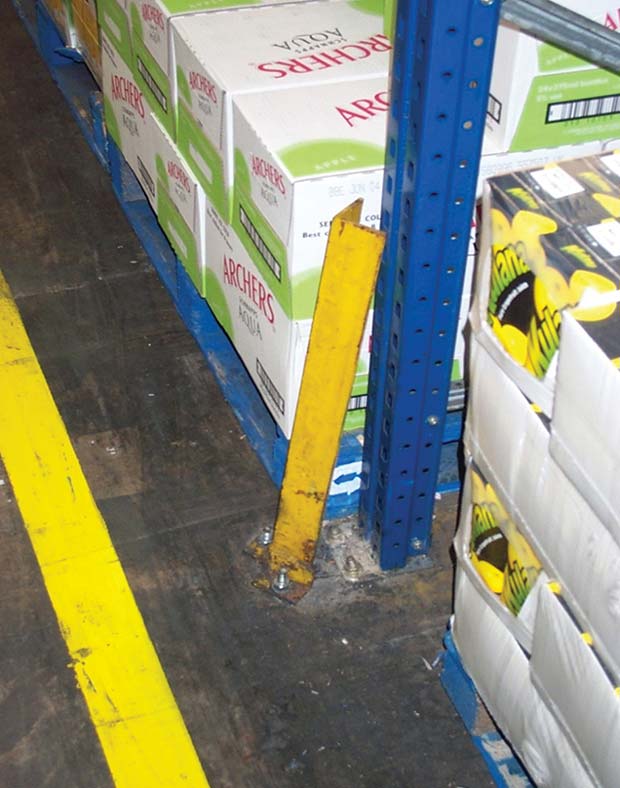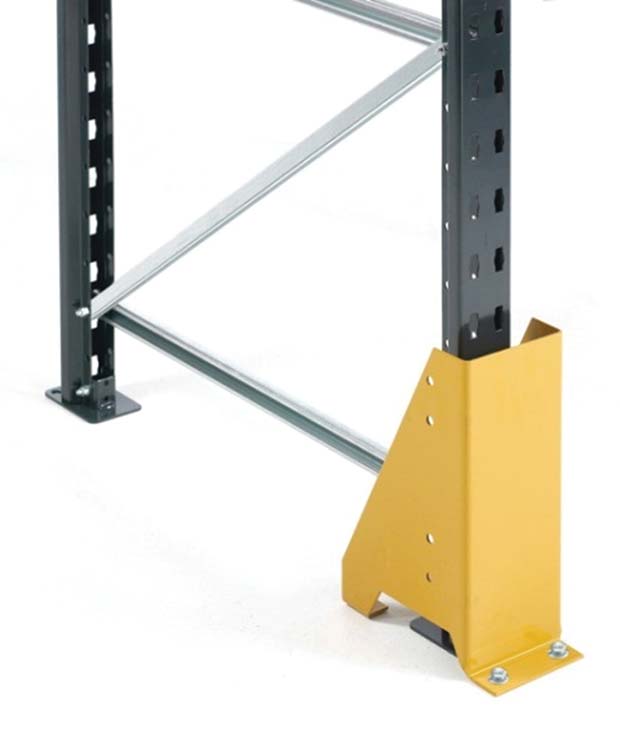Colin Hinton of the Storage Equipment Manufacturers’ Association’s Technical Committee outlines best practice enshrined in Europe’s foremost reference; the SEMA Code of Practice on Rack Protection.
 A critical concern on SEMA’s agenda is the issue of the protection of pallet racking when a warehouse is in daily use. If the scheme has been designed in accordance with SEMA Codes of Practice and installed by trained SEIRS installers then this should provide confidence in its design and the construction. But what needs to happen once the installers have gone away and the warehouse is handed over?
A critical concern on SEMA’s agenda is the issue of the protection of pallet racking when a warehouse is in daily use. If the scheme has been designed in accordance with SEMA Codes of Practice and installed by trained SEIRS installers then this should provide confidence in its design and the construction. But what needs to happen once the installers have gone away and the warehouse is handed over?
Many readers will have seen dramatic videos of racking collapse on YouTube and our responsibility to prevent such dangerous occurrences goes further than the safe design and installation of storage equipment. It extends to proper guidance on after-care, once a racking system is in service.
The HSE has welcomed the news that in 2014, SEMA launched a detailed reference document called: The Code of Practice for the Design and Use of Racking Protection. This publication is now the most comprehensive in Europe.
Our major message to end users is that rack protection should always be the last line of defence. We advocate four key forms of protection; adequate clearances, effective inspection, trained operators and proper maintenance. So, in theory, physical rack protection isn’t necessary. However, mistakes can happen, therefore additional safeguards can be a worthwhile investment.
So what are the current legal guidelines and what do the proposals in the Code comprise to improve rack safety? Collectively, HSG76 on warehousing and storage, EN15512 rack design, EN 15620 Racking Tolerances Code and our SEMA Users’ Code state that protection of corner uprights should absorb 400Nm and consideration should be given to protecting internal uprights. Sadly, there is very limited information on different protection requirements, design, positioning and testing in these documents/guidelines.
The 2014 SEMA Code of Practice on Rack Protection clearly defines individual responsibilities;
• Design and testing requirements
• Specifiers’ responsibilities
• Suppliers’ responsibilities
• Users’ responsibilities
The Code is being developed in three phases and will cover the protection of Adjustable Pallet Racking (APR) components, drive-in racking components and personnel. Phase 1 covers corner uprights, internal uprights and frame protection.
 The SEMA Code states that a protector should be positioned and tested in order to ensure that no damage is sustained to an upright after an impact. The 400Nm value will typically provide protection from a 3 tonne truck at 1.8 kmph or a 5 tonne truck at 1.4 kmph but these are relatively slow manoeuvring speeds and do not represent a normal working pace. Therefore 400Nm offers only limited protection. If greater protection is required, then a higher value should be specified. Testing will determine the location of the protection e.g. the clearance to the upright must match that of the test procedure, so if tested with a 35mm gap between the upright and protection, it follows that it must be installed with a 35mm gap.
The SEMA Code states that a protector should be positioned and tested in order to ensure that no damage is sustained to an upright after an impact. The 400Nm value will typically provide protection from a 3 tonne truck at 1.8 kmph or a 5 tonne truck at 1.4 kmph but these are relatively slow manoeuvring speeds and do not represent a normal working pace. Therefore 400Nm offers only limited protection. If greater protection is required, then a higher value should be specified. Testing will determine the location of the protection e.g. the clearance to the upright must match that of the test procedure, so if tested with a 35mm gap between the upright and protection, it follows that it must be installed with a 35mm gap.
Frame protection will also provide protection to rear uprights and bracing. It is provided either relatively close to the end frame or at a certain minimum distance from the end frame. Additional corner protection is not generally necessary where frame protection is provided.
SEMA’s job is to provide accurate, generic guidance on how to get the best out of your assets in three ways; by maximising your building’s space to profitable advantage; through the design and installation of storage systems that are fit for purpose while preventing damage to items stored; and with the utmost respect for the health and safety of personnel.
Post installation, our firm belief is that rack protection should be your warehouse’s last line of defence. Review your procedures rigorously on those four key forms of protection; adequate clearances, effective inspection, trained operators and proper maintenance.




Comments are closed.